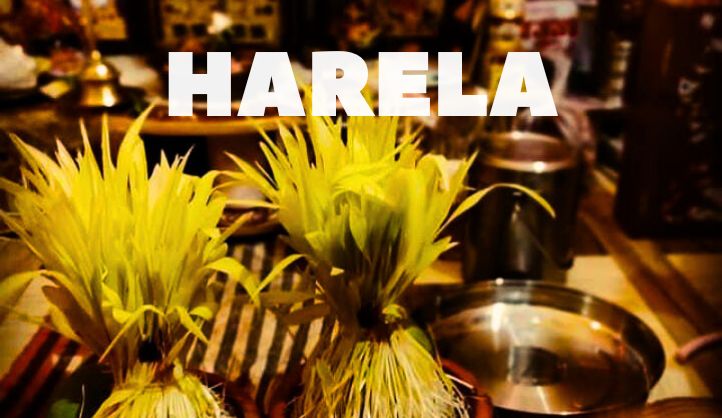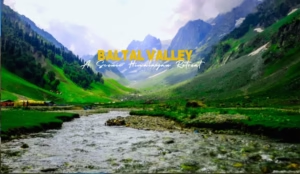What Is Harela?
Harela Parv, deeply rooted in the rich cultural tapestry of Uttarakhand, is a festival that transcends religious boundaries to embody the symbiotic relationship between the people of this region and the fertile land they cultivate. This celebration, laden with cultural significance, takes place during the auspicious month of Shravan and is an integral part of the traditional calendar.
Rituals and Ceremonies:
- Sowing of Seeds: The festival kicks off with the ceremonial sowing of barley seeds. Barley, considered a sacred grain, is planted in small pots or directly in the fields. The act of planting symbolizes the onset of the monsoon season, a period eagerly awaited by the agrarian communities for the promise of rain and a bountiful harvest.
- Decorative Displays: Homes and public spaces come alive with vibrant decorations. Green leaves, flowers, and various plants are meticulously arranged to create intricate patterns, transforming the surroundings into a visual representation of fertility and growth. The greenery is not only an aesthetic choice but also carries profound symbolic meaning.
Religious Significance:
- Goddess Parvati Worship: Central to Harela is the worship of Goddess Parvati, also known as Hareli Mata. Devotees express their gratitude to the divine feminine energy, seeking her blessings for agricultural prosperity, the well-being of their families, and the overall welfare of the community.
- Offerings and Prayers: Elaborate rituals involve making offerings to the goddess, including traditional items like grains, fruits, and sweets. Communities come together in temples or designated prayer areas to offer collective prayers and seek divine benevolence for a fruitful harvest season.
Cultural Celebrations:
- Folk Dances and Music: Harela is not just a religious observance but a time for cultural festivities. Folk dances, traditional music performances, and other cultural programs add vibrancy to the celebrations. The beats of drums and the twirls of dancers reflect the joyous spirit of the occasion.
- Community Bonding: The festival fosters a strong sense of community spirit. People come together to share meals, exchange good wishes, and strengthen social bonds. This communal aspect of Harela reinforces the idea of unity and collective well-being.
Environmental Emphasis:
- Plantation Drives: Harela carries an essential environmental message. Planting trees and promoting green initiatives are often integral to the celebrations. This emphasis on environmental consciousness aligns with the traditional wisdom of living in harmony with nature.
- Ecological Awareness: The festival serves as a reminder of the delicate ecological balance and the interconnectedness of all living beings. It encourages a sense of responsibility towards the environment, urging people to protect and nurture the land that sustains them.
Agricultural Significance:
- Seasonal Transition: Harela marks the transition from the dry months to the much-anticipated monsoon season. The sowing of barley seeds symbolizes not only the agricultural cycle but also the hope for abundant rainfall, crucial for a successful harvest.
- Barley as a Sacred Crop: Barley holds special significance in Harela celebrations. Beyond its practical use as a staple grain, barley is revered for its role in religious ceremonies and is believed to possess purifying qualities. The planting of barley during Harela is a way of invoking blessings for a fertile and prosperous agricultural season.
Traditional Attire and Crafts:
- Distinctive Clothing: During Harela, people often don traditional attire that reflects the cultural heritage of Uttarakhand. Vibrant colors, intricate embroidery, and traditional jewelry contribute to the festive atmosphere. The clothing worn during the celebrations is a testament to the pride people take in their cultural identity.
- Handicrafts and Artwork: The festival also provides an opportunity for local artisans to showcase their skills. Handcrafted items, including pottery, woven textiles, and intricate woodwork, are displayed and exchanged during Harela. This not only supports the local economy but also highlights the artistic prowess of the community.
Feasting and Culinary Delights:
- Special Harela Cuisine: Harela is synonymous with feasting, and special dishes are prepared to mark the occasion. Traditional recipes using local ingredients are passed down through generations, adding a gastronomic dimension to the celebrations.
- Community Feasts: The festival fosters a sense of community through shared meals. Families and neighbors come together to partake in festive feasts, reinforcing the idea of collective joy and mutual celebration.
Social and Philanthropic Initiatives:
- Charitable Activities: Harela is also a time for philanthropy and social service. Communities engage in charitable activities, such as organizing food drives, distributing essentials to the less fortunate, and supporting local initiatives. This reflects the spirit of compassion and community service embedded in the festival.
- Cultural Exchanges: Harela often becomes a platform for cultural exchanges. People from different communities come together to share their unique traditions, fostering understanding and unity among diverse groups within Uttarakhand.
Modern Interpretations:
- Urban Celebrations: While Harela has deep rural roots, urban areas in Uttarakhand also embrace the festival. Urban celebrations may include cultural events, eco-friendly initiatives, and community gatherings, showcasing the adaptability of traditional festivities to contemporary settings.
- Promotion of Sustainable Practices: In recent years, there has been a growing emphasis on incorporating sustainable practices into Harela celebrations. This includes promoting eco-friendly decorations, reducing waste, and raising awareness about environmental conservation.
Conclusion
Harela is not just about people and prayers; it also cares for the environment. There are activities like planting trees and being mindful of nature. It’s a reminder to take care of our surroundings and live in harmony with the Earth.
In simple words, Harela is like a big, joyful party where people plant seeds, pray for good things, make everything look pretty, dance and sing, and also take care of the planet. It’s a festival that brings joy and a sense of togetherness to the people of Uttarakhand.
FAQs Related to Harela
1. When is Harela celebrated?
Harela is typically celebrated during the Hindu month of Shravan, which usually falls in July or August. The exact date varies each year based on the lunar calendar.
2. What is the significance of barley in Harela?
Barley is considered sacred in Harela and symbolizes fertility. The festival begins with the ceremonial sowing of barley seeds, reflecting the hope for a prosperous agricultural season.
3. How do people celebrate Harela?
Harela celebrations include rituals such as the sowing of barley seeds, worship of Goddess Parvati, community gatherings, cultural performances, and environmental activities like tree plantation drives.
4. Is Harela only a religious festival?
Harela is a multifaceted celebration that goes beyond religious rituals. It encompasses cultural, agricultural, and environmental aspects, reflecting the close connection between the people of Uttarakhand and their natural surroundings.
5. Are there any specific traditional foods associated with Harela?
While there may not be specific foods exclusively associated with Harela, the festival often involves community feasts where traditional recipes using local ingredients are shared and enjoyed.





